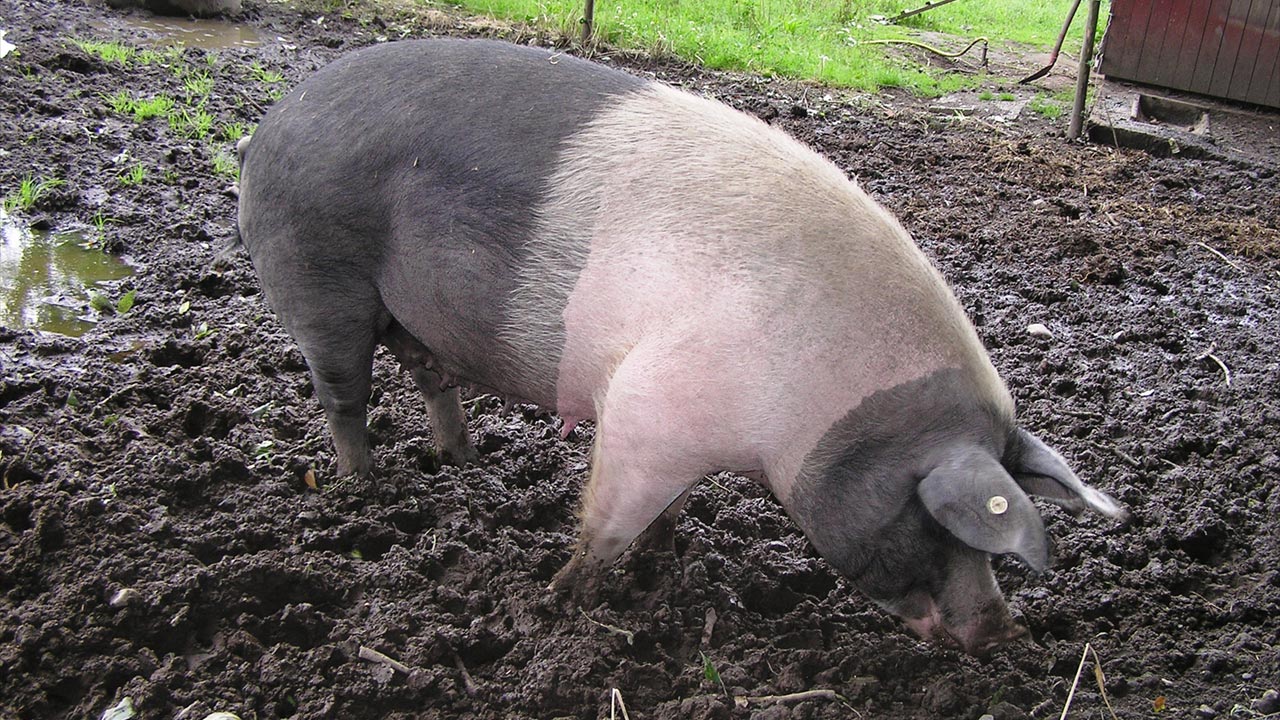通常、下半身は黒色で、肩から前足へかけて白いベルトまたはサドルのような模様がある。1880年頃ドイツ北部でブタの飼育が人気を博した。しかし、その地域の白黒の種は生産性が良くなかったため、1920年に農家らはよく似たイギリスの固有種、ウェセックスサドルバックと交配させた。1941年にこの種はアンゲルンサドルバックと呼ばれる特別な種として受け入れられた。世界第二次大戦後、アンゲルンサドルバックは非常にポピュラーな種となった、なぜなら肉質が良い上、飼育が簡単で繁殖もそれほど複雑でなかったからだ。しかし、1950年代に消費者が脂肪の少ない肉を好むようになると、アンゲルンサドルバックは市場でその価値を失ってしまう。現在になってようやく消費者が、肉の質や動物福祉をより重視するようになり、アンゲルンサドルバックは再び人気を取り戻した。それでも2011年に確認されたのはたった70頭で極めて希少な種といえる。
Angeln saddleback
Typically, the posterior half of the body is black and a white belt or saddle is found from fore leg to fore leg. About 1880, the husbandry of pigs became very popular in Northern Germany. But the production of the local, white and black breed was not productive enough. Therefore in 1920, the North German farmers crossbred their local pigs with a similar breed from England, the Wessex Saddleback. In 1941 this pig breed was accepted as a special breed, the so called Angeln saddleback.
After World War II the Angeln saddleback became very popular because it was easy to keep and not too complicate to breed but produced a good meat. When in the 1950ies the consumers asked for meat with less fat, the Angeln saddleback lost continuously its importance for the market. Only today, when the consumer looks more for good meat quality and the welfare conditions of the husbandry, the Angeln saddleback becomes more popular again. But in 2011 only 70 Angeln saddlebacks are still registered. Therefore the breed is extremely endangered.

